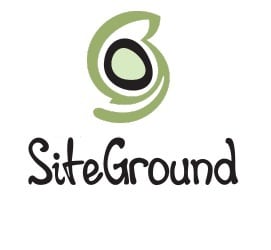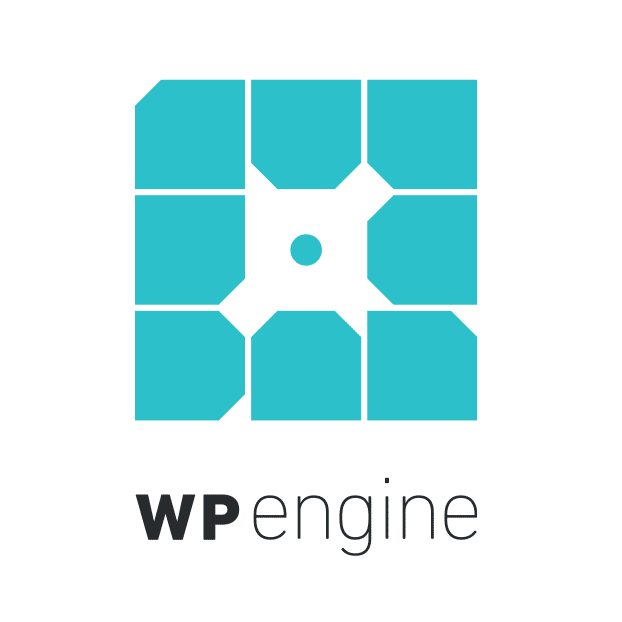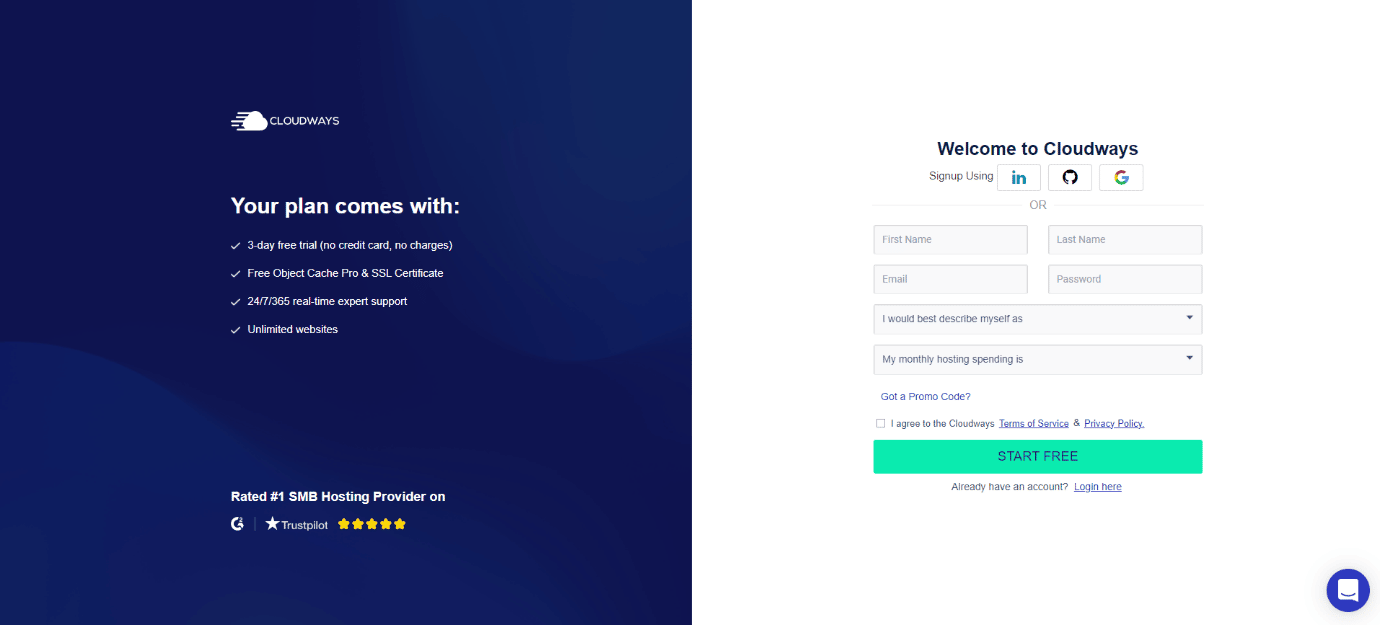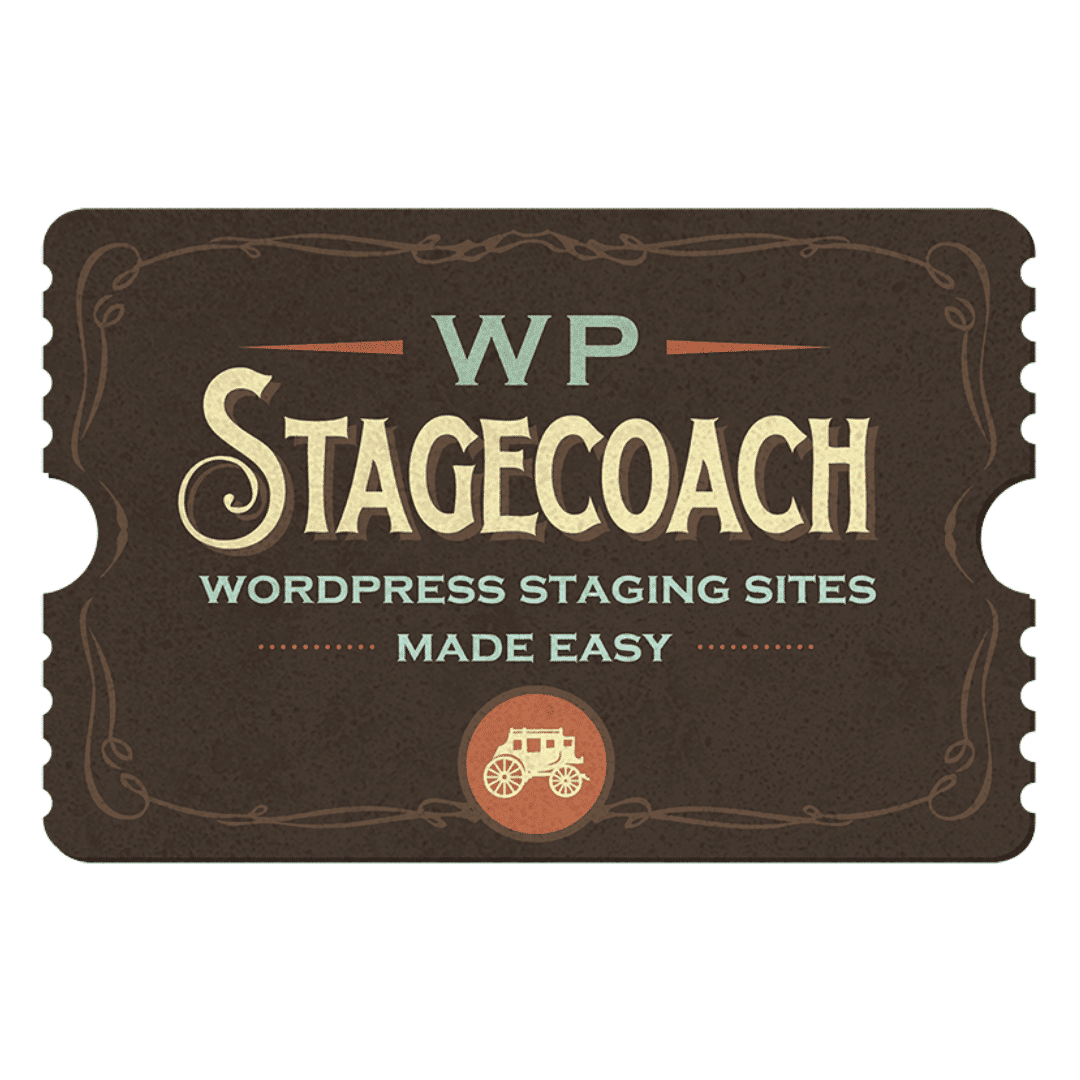It’s no secret that WordPress is one of the most popular site-building and content management systems (CMS) in the world. In fact, according to W3Techs, WordPress currently powers 34% of all websites on the internet. That’s a lot of websites! And it’s only growing more popular every day.
But with great popularity comes great responsibility. As a WordPress user, you need to be aware of the many dangers and security risks that come with using this platform. Luckily, there are some easy steps you can take to protect your WordPress site, one of which is creating a staging site. The methods for creating a staging area vary from host to host.
In this article, we will cover methods for four WordPress hosting services, namely, the Bluehost, SiteGround, WP Engine, and Cloudways. Cut the learning curve with our step by step guide on how to migrate your WordPress site into a staging area!
What is a Staging Site?
A WordPress staging website is a clone of your live site that you can use to test out new themes, plugins, and other changes before implementing them on your actual site. This is a great way to ensure that any new additions or changes you make to your site don’t break anything or cause any other issues.
You can think of the staging site as your own ‘mini-lab’ to test out a series of “experiments,” toss out the ones that don’t work, and apply the ones that have the highest potential. The time you’ll spend inside your mini-lab (no white coats needed) will save you a lot of time and money when compared to the potential disasters that could happen after outright implementations of any code changes.

Bluehost Staging Area Migration
Hi there, Bluehost users! Here’s your quick guide on how to establish your own Staging Area for your live site.
step 1
First, you need to login to your WordPress site’s admin area and click the ‘Bluehost’ button, then click the ‘Staging’ page. This will now bring you to the Bluehost’s staging site. The next you should do is to click on the ‘Create Staging Site’ button to continue.
step 2
Bluehost will now roll out the staging environment for your website. Once it’s done, the Blue host will send you a success message with a link to visit your staging site. (It appears that even your kid can do this staging stuff, huh?)
step 3
Next, click the ‘Go to the Staging Site’ button to continue.
step 4
You will now be brought to the admin area of your staging WordPress site. Look for the red button on top of the admin bar which informs you that you’re now operating in a staging environment.
step 5
You may now start and work with your “experiments” without affecting your live website on the other side.
Migrating your live site into a staging area might sound overly technical, but as you have seen with the Bluehost’s easy-peasy process, it only takes few clicks to make this stuff possible.

SiteGround Staging Area Migration
Here’s one for the SiteGround fans out there! This, too, rolls out as an easy step-by-step process if you’re considering making a staging area for your site.
step 1
First things first. Log in to your SiteGround cPanel dashboard. Next, scroll down your finger to ‘WordPress Tools’ section and click the ‘Staging’ icon.
step 2
It will now bring you to the staging sites page. From there, you now need to add your website to the staging site manager. When you’re done, you may now click the ‘Add WordPress’ button to continue.
step 3
On the next screen, select the URL where your website is installed.
Take note: If your WordPress site is installed in a sub-category, then you may add that in the field next to it and click on the ‘Add URL’ button to continue.
step 4
When the Staging Site manager detects your website, it will now add your website to the page. After this, you can now click on the ‘Create Staging Copy’ button to continue the process.
step 5
You will now see a pop up that allows you to input a Password Protect to your staging site (to prevent any unauthorized personnel from tweaking and ruining your staging site). Aside from preventing unauthorized access, it also prevents Google from indexing duplicate contents.
You can now provide a username/password and then click ‘Continue’.
SiteGround will set the stage for your website’s very own Staging Area. When it’s done, you will see the Staging Site Manager with links to the admin area of your Staging Site.
step 6
You’re now ready to rock ‘n roll (and tweak) with your Staging Area. Armed with plugins, themes, new code snippets, and more, you can now apply endless modifications until you reach your desired website output.
step 7
(Optional) Brag about how easy it is to make a SiteGround Staging Area!

WP Engine Staging Area Migration
How’s it going, WP Engine fans? Your waiting ends here with our (again) oh-so-simple process of migrating your WordPress site into a staging area. A powerful hosting service such as WP Engine makes it so easy for its loyal users to take advantage of operating a staging area. Let’s begin!
step 1
Just like with every first step, you need to log in, this time, to your WP Engine dashboard. Next, go to the sites page and choose your website by clicking on it. It will bring you to your website dashboard. You may now click the ‘Add Staging’ link from the left column.
step 2
On the next screen, enter a name for your Staging Site under the ‘Create New’ tab. Take note that it will also be the subdomain of your staging site.
step 3
Click on the ‘Create Environment’ button to continue.
It’s now time for WP Engine to create a staging site for you! This staging area is just an empty WordPress site without any content of your live website. But we can change this!
step 4
On the left column, click on the ‘Production’ to switch to your production environment. On the next screen, you must click on the ‘Copy’ button at the top right corner of the screen.
step 5
Click ‘Preview Copy Button’ to continue.
After clicking it, a warning pop up will be displayed, which informs you that you are copying the source website to the staging environment. Click on the ‘Copy Environment’ button to proceed. WP Engine will now scan and copy your live website to the staging environment. You will now receive an email notification when the process is done.
step 6
After the confirmation, you can now log in to your staging website using the same admin password you are using for your live website.

Cloudways Staging Area Migration
Last but not the least, let’s move on to Cloudways! We’ll show you how to easily create a WordPress staging site with Cloudways Hosting. Let’s get started! Cloudways is my recommended host because it is incredibly fast, at a low cost, and they make staging sites east!
step 1
Log in to the Clouways platform. If you don’t have a Cloudways account yet on this hosting provider, you can sign up for a free trial. The first thing you need to do is log in to the Cloudways Platform.
 step 2
step 2
Create a staging application. Once you’re logged in, go to the Applications tab and choose the WordPress website you need to create a staging environment for. Then click on the three vertical dots beside the picked application and choose clone app/create staging tag.
 step 3
step 3
Select a server for the staging application. You can either select an existing server or create a new server from the drop-down menu. Then checkmark the create as staging option and click ‘Continue’.
However, it takes time to provision the server. So, you can select an existing server and create a staging application on it. The overall process will be completed in minutes.
 step 4
step 4
Copy data from Cloudways staging to live website. As soon as the staging application is created, you need to copy data from it to your live WordPress site. For this, go to the Staging application and select Staging Management.

From here you’ll see three options:
- Push the changes you made on the staging application to the live application.
- Pull the contents of the live application to the staging application.
- View the deployment logs for all the push and pull requests.
To copy the data from the WP Staging site to Live, select the Push option. You’ll see a warning message asking you to confirm your action. Click on the Confirm button to proceed.
 step 5
step 5
Restore your application. In case you don’t like the changes made on your live application, you can always roll back by restoring your application from a backup. To do this, go to your live WordPress site and select ‘Backup and Restore’ from the vertical dots menu. Then click on ‘Restore application now’.

This will take you to the Cloudways Platform where you can select the backup you want to restore. Once you’ve selected the backup, click on the ‘Restore button’. You’ll see a warning message asking you to confirm your action. Click on the ‘Confirm’ button to proceed.
No Staging Options?
You’re excited about testing out your endless ideas because you’ve heard that a Staging Area would allow you to do that without damaging your live site. So you rush to your laptop, then log in to your trusty host to make your staging area. But wait, something’s wrong. You can’t find any staging options on your dashboard! You’ve scrolled here, you’ve scrolled there, and even a few more dozen clicks have lead you to nowhere. No signs of staging options at all.
Well, you’re not alone. A lot of users discover too late that their host providers don’t offer any staging capabilities (partly because users themselves discover late how important staging is). Do not fret, because technology is here to save the day. Encounter a limit and it’ll will create a make-shift bridge above it. Nothing’s too impossible for technology, including your ‘no staging options’ problem.
One way to migrate your WordPress site into a staging environment is through WordPress Staging Plugins. Here are the top plugins you need to take a look at if you want to migrate your WordPress site to a staging area but your host doesn’t have anything built in:
Top WordPress Staging Plugins

WP Staging
WP Staging’s straightforward name says it all. This staging plugin allows you to create a secure and private WordPress staging environment. It is for people who don’t want any unauthorized access to their staging site as well as for those who hate it when crawlers index make a mess out of their SEO.
This plugin is designed with a smooth, hassle-free stage migration in mind. Just take a look at its key features:
- One-click Cloning
- Allows Staging Site to be housed on a Subdomain or a Custom Domain.
- Allows your Staging Site to be visible only to authenticated users.
- Allows your Staging Site to be housed on your server, protected from any third parties.
Even though it comes with a free version, one of its limitations is it doesn’t allow you migrate the changes you’ve made into your live site.
The free version is good if you all want to do is to test your various ideas. To take advantage of all the features listed above, you may want to try out WP Staging Pro, which starts at $98 per year.

WP Stage Coach
WP Stage Coach (we love how it’s named) is specifically made for individual site owners, professional developers, maintenance providers, and hosting companies who want to provide staging options for their customers.
Take note that the staging sites you create using WP Stage Coach are meant to be temporary. After accomplishing all the necessary testing, updates, and other changes you want to put it into your live site, it will then recommend you to delete your staging environment and create a new one the next time it’s needed. It has the key features of usual premium staging plugins like multiple push-to-live options, simplified set up, and, most of important of all, security.
Here’s a detailed look of its main capabilities:
- Servers? It’s on us!Using WP StageCoach doesn’t take much of your space because servers are provided by its developers.
- Ease of use.It’s a breeze to use with its one-click, manual and selective push-to live options.
- Database merging. This feature keeps payment gateways, form submissions, and other site activities taking place during a push intact.
- Collaboration and security. It’s impressive how the plugin flawlessly fuses collaboration and security, which often work against each other. It allows you to implement Password Protection for your staging site(s), which allows collaboration while keeping key information private.
- Revert button. It allows you to undo a migration if you need to peddle back and make some more or less changes before putting your modifications into your live website.

WP Time Capsule
WP Time Capsule fills up not only your staging needs, but your backup needs as well. What’s amazing about this plugin is, aside from providing the latest copy for your website, it also saves space for for you at the same time.
To access its staging capability, navigate to WP Time Capsule, go to ‘Staging’ and click on the ‘Start Staging’ button. Here are the things you can enjoy with WP Time Capsule’s staging capabilities:
- One Click Update.It’s amazing how you can make so many changes with just one click. The plug in will be able to make updates on the themes in your WordPress staging environment from back-end of your live site without having to go through too many steps.
- One-click Restore.You can restore a backup made with WP Time Capsule to your WordPress environment from the back end of your live site with one click as well.
- One-click Copy Changes. Here’s more to satisfy your One-Click Cravings. This plugin also allows you to copy changes to your staging area over to your live site in just one click.
- Implements administrator login. WP Time Capsule prevents unauthorized access from visitors and even search engines by requiring an Administrator Login to access your staging site.

BlogVault
Blog Vault can provides basic capabilities that would do well for bloggers, freelance developers, business owners, and even agencies. Don’t belittle the word ‘basic,’ as it can provide site back-ups, free staging, and management tools for professionals.
The best part is it can multitask so you can leave it for a while and focus on some other stuff. Also, you can conveniently monitor all your progress on your BlogVault dashboard.
Let BlogVault impress you with these solid and reliable features:
- Free off-site storage on BlogVault servers.This feature covers your various staging sites and would protect these sites’ performance from negative impacts that may come somewhere from your operations.
- Allows you to use multiple sites across multiple hosts.This feature allows for seamless management of various sites (you’ll be a pro juggler), which can drive up your productivity while still maintaining quality output.
- Password protection. It prevents anybody from having a “sneak peek” or getting a front-row seat on what’s going on inside your staging site without your permission. It also prevents Google from de-indexing for SEO.
- Seamless live migration. It makes it easy for you to migrate your approved modifications on your live site through its two-click selective or full-database merging.
- Large website support. This feature will allow you to test drive, make updates, and make modifications even on large online properties without being anxious about possible errors.
Final Thoughts
With a WordPress staging area, you can play around with any changes you want to implement without ruining your live website.
You can either run a staging area from your host’s built-in feature, or set it up using the plugins we have mentioned. Whether you use your host or a plugin, setting up a staging site is so easy that even a non-technical person can get one up hassle-free.
